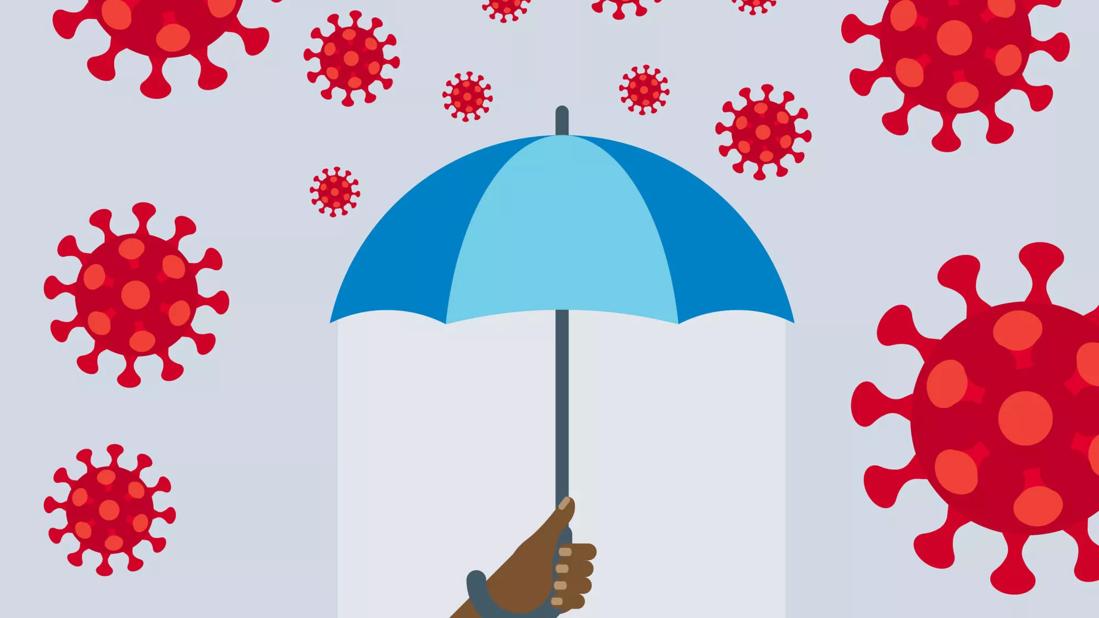Like the flu and RSV, COVID-19 cases are rising seasonally

For many of us, the COVID-19 pandemic seems like an event from our storied past. Gone are the days when hospitals were overwhelmed with surge after surge of the coronavirus, when we didn’t know how to treat it or about the widespread damage it would cause.
Advertisement
Cleveland Clinic is a non-profit academic medical center. Advertising on our site helps support our mission. We do not endorse non-Cleveland Clinic products or services. Policy
Now that we have substantial treatment options and vaccines to help us prepare for the fall and winter season, many of us might assume that we’re in the clear — but the pandemic isn’t over.
“Most people believe COVID-19 has turned into a common cold. For the immunocompetent, someone with a functioning immune system, that might be true part of the time,” says infectious disease specialist Ryan Miller, DO. “But we’re still seeing critically ill patients, people who are mostly older, with multiple illnesses and COVID-19 infections coming into the hospital with severe respiratory disease.”
And in order to stop the effects of worsening illness and protect the most vulnerable among us, we have to stay vigilant about the spread of COVID-19. Dr. Miller explains what that looks like and why you should still rely on early pandemic protocols as you head into the fall and winter seasons.
COVID-19 is something everyone should be concerned about. Indeed, we’ve reached our new normal: COVID-19 is now part of a host of seasonal respiratory viruses that peak during the fall and winter seasons. That means, while you can get COVID-19 any time of the year, there are windows of opportunity in which new strains of the virus can cause widespread infection. You’re also now more likely to get COVID-19 again year-over-year like other common circulating illnesses, like the respiratory syncytial virus (RSV) and influenza (flu).
Advertisement
“The risk of getting a repeat COVID-19 infection changes with each strain, so it’s a moving target,” explains Dr. Miller. “We’ve seen that even vaccinated people can have high rates of some COVID-19 infections if the strain has changed significantly enough.”
And the ones who are most likely to get severe disease are people who:
These populations especially run the risk of picking up more than one infection at a time — meaning they could get infected by COVID-19, RSV and/or the flu all at once.
“We worry with influenza and RSV circulating that co-infections of COVID-19 would be very severe,” says Dr. Miller. “COVID-19 may not be as widespread or as deadly as it was earlier in the pandemic for some people, but it can get there in certain populations.”
COVID-19 cases will likely continue to rise and fall with each passing respiratory season. But a data tracker from the CDC shows a steady increase in COVID-19 infections are already happening ahead of this year’s respiratory season.
The reason COVID-19 cases increase on occasion is because of the virus’ ability to develop mutations. With each new variant of COVID-19, our bodies are exposed to a virus it may not know how to fight off. And that’s why our COVID-19 vaccines are made to be responsive against the current and most dominant strains of COVID-19.
“As the virus changes, it evades the immunity that we have, and you can get a reinfection if it’s a version of the virus that’s different than the one you’ve been vaccinated for in the past,” notes Dr. Miller.
That's why health authorities recommend keeping up with your vaccine schedule. That includes staying up to date on your flu shots and that you get the RSV vaccine (if you’re eligible) along with an updated COVID-19 vaccine.
For the first time, we have a vaccine for all three of these respiratory diseases that peak all at the same time, and that’s an incredibly important tool to have for anyone who’s most at risk for infection.
“Most of these respiratory viruses have a genetic drift over time, and that’s well elucidated with influenza,” continues Dr. Miller. “Over time, genetic variations cause a change, and the antibodies we currently have don't provide the same protection as with old exposures or vaccines. Getting an updated vaccine gives us better protection.”
Although the CDC isn’t tracking infections as closely as they were earlier in the pandemic, they continue to monitor new variants as they evolve. And the emergence of a new variant can happen at any time.
Getting COVID-19 looks much the same way it did earlier in the pandemic. Common symptoms that can occur five to seven days after being exposed to the virus include:
Advertisement
But the most severe symptom you want to watch out for is shortness of breath or an inability to breathe.
“If you get short of breath or winded very easily with any movement, those are signs that you’re getting lung involvement, which is a severe disease,” states Dr. Miller.
Perhaps one of the greatest risks for most individuals is the potential for developing long COVID. We still don’t know much about long COVID and how it affects you long term, but getting a COVID-19 infection could result in experiencing some symptoms for up to six months or more. Some of the most common symptoms people continue to experience some time after they’ve had COVID-19 include:
“Long COVID is thought to be an immune inflammatory reaction that gets set off by a COVID-19 infection, and it’s hard to measure,” notes Dr. Miller. “At this point, we don’t know if these symptoms are going to last the rest of their lives because we haven’t had enough time to assess the damage.”
That means it could take five, 10 or even 20 years to fully understand how COVID-19 affects people in the long term.
Advertisement
In general, all the same rules from earlier in the pandemic still work to protect yourself and others from COVID-19:
“As a general rule of thumb, health authorities recommend that everyone get vaccinated by the end of October,” encourages Dr. Miller. “And if you experience symptoms of any sickness, it’s wise to isolate until your symptoms are resolved no matter what virus you have.”
If you develop symptoms, you should test for COVID-19. And if you test positive, you should take care of your symptoms and stay home until you feel better. Even then, consider wearing a face mask for another five days to protect everyone else around you.
“COVID-19 can still cause issues in the most vulnerable patients, and I always want to reiterate that we need to protect the people who can’t handle it even when they get the vaccines,” stresses Dr. Miller. “It’s our responsibility as people with good immune systems to help protect the people who don’t have good immune systems. That’s standard protocol for all viruses.”
Advertisement
Learn more about our editorial process.
Advertisement

Most can return to work or school when they’re symptom-free for 24 hours

Covering your mouth when you cough and staying home when you’re sick are a couple ways to help keep yourself and others COVID-free

This vital nutrient supports your health, but its role in COVID-19 prevention and treatment isn’t proven

Studies have shown promising results, but additional research is needed

Infection and inflammation can cause you to lose your voice and have other voice changes until you’re fully healed

A COVID-19 infection can bring on depression or anxiety months after physical symptoms go away

Just like the flu, COVID-19 continues to evolve every year with new and smarter variants

The latest omicron subvariants carry specific mutations that may allow the SARS-CoV-2 virus to be better at evading immune protection

Babies can get congested easily, but you can calm their cough by keeping them hydrated, using nasal drops and running a humidifier

Weight loss may cause loose, sagging skin and muscle loss to your rear

Several conditions, like vitiligo and fungal infection, can cause a loss of pigmentation, leading to white spots or patches on your skin